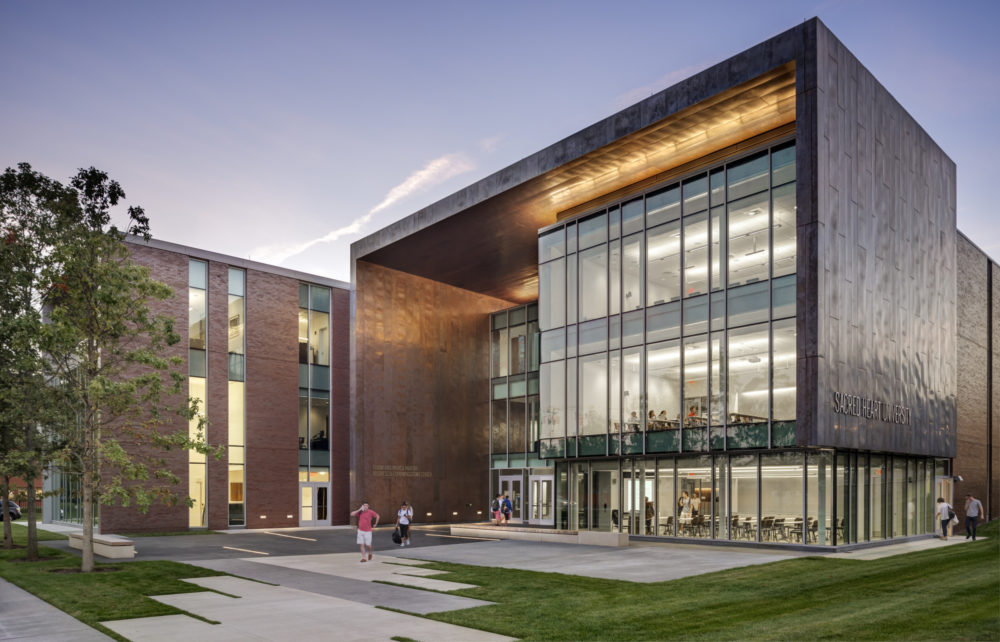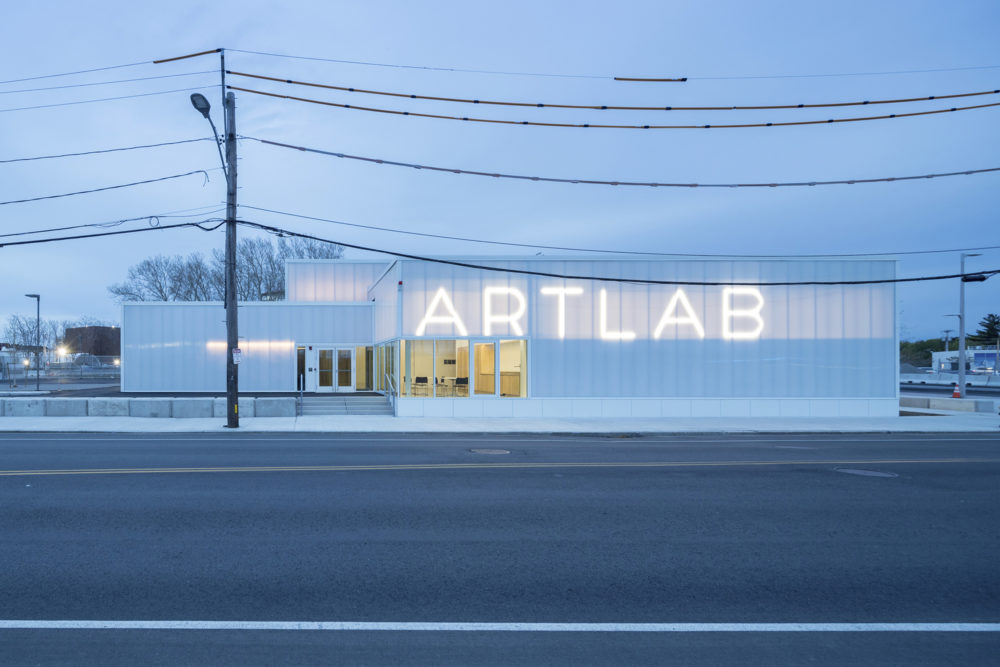Create a Zero Net Energy lab science building where the application of classroom skills and the sharing of interdisciplinary knowledge converge
Bristol Community College John J. Sbrega Health and Science Building
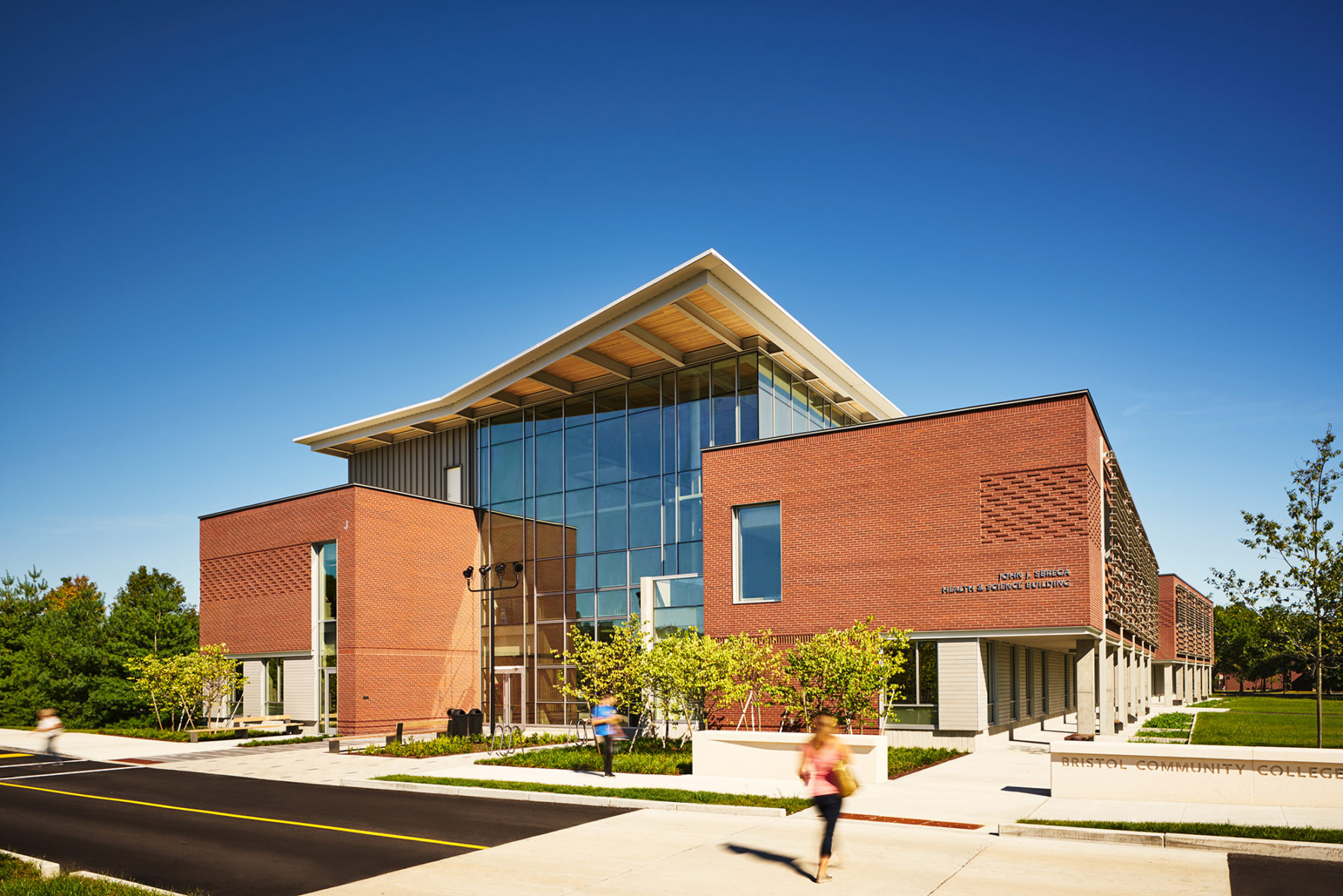
The Sbrega Building frames a new campus green and is responsive to the architectural context of campus, which was built in 1965 and is predominantly composed of two-story brick buildings
The John J. Sbrega Health and Science Building is a shared resource occupied by multiple disciplines within the Sciences and Health Professions disciplines at Bristol Community College. The facility represents the translation of basic science to its application in the health professions. For the sciences, the building accommodates flexible instructional labs and support space for field biology, biotech, microbiology, and general chemistry. The health professions are represented by nursing skills and simulation labs, clinical laboratory science and medical assisting labs, dental hygiene labs and teaching clinic, which provides care to underserved populations.
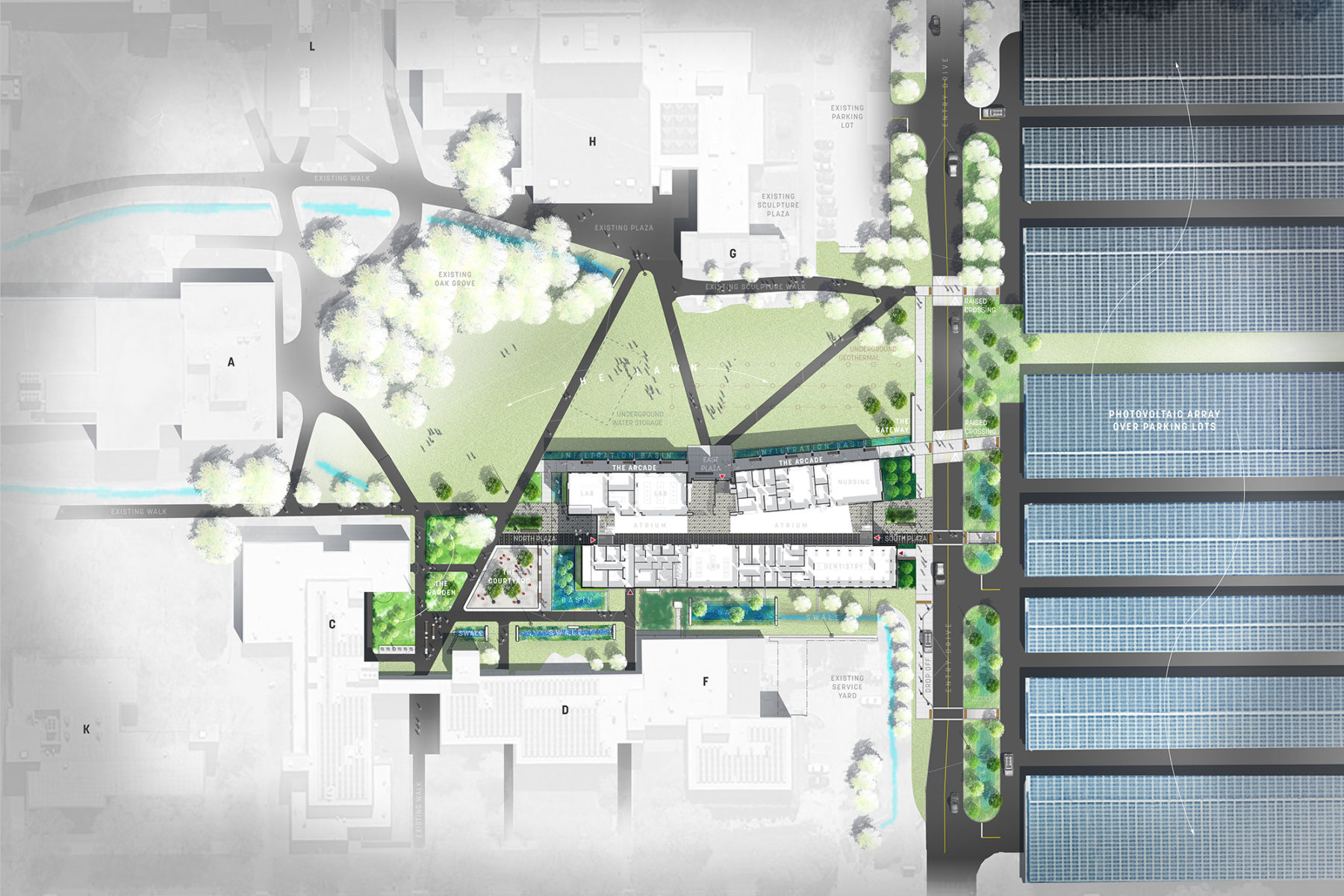
The building transforms a pedestrian path into an interior concourse (atrium) and covered walkway (arcade)

The arcade runs along the east side of the building and faces a campus lawn strengthening the connection between the building and landscape
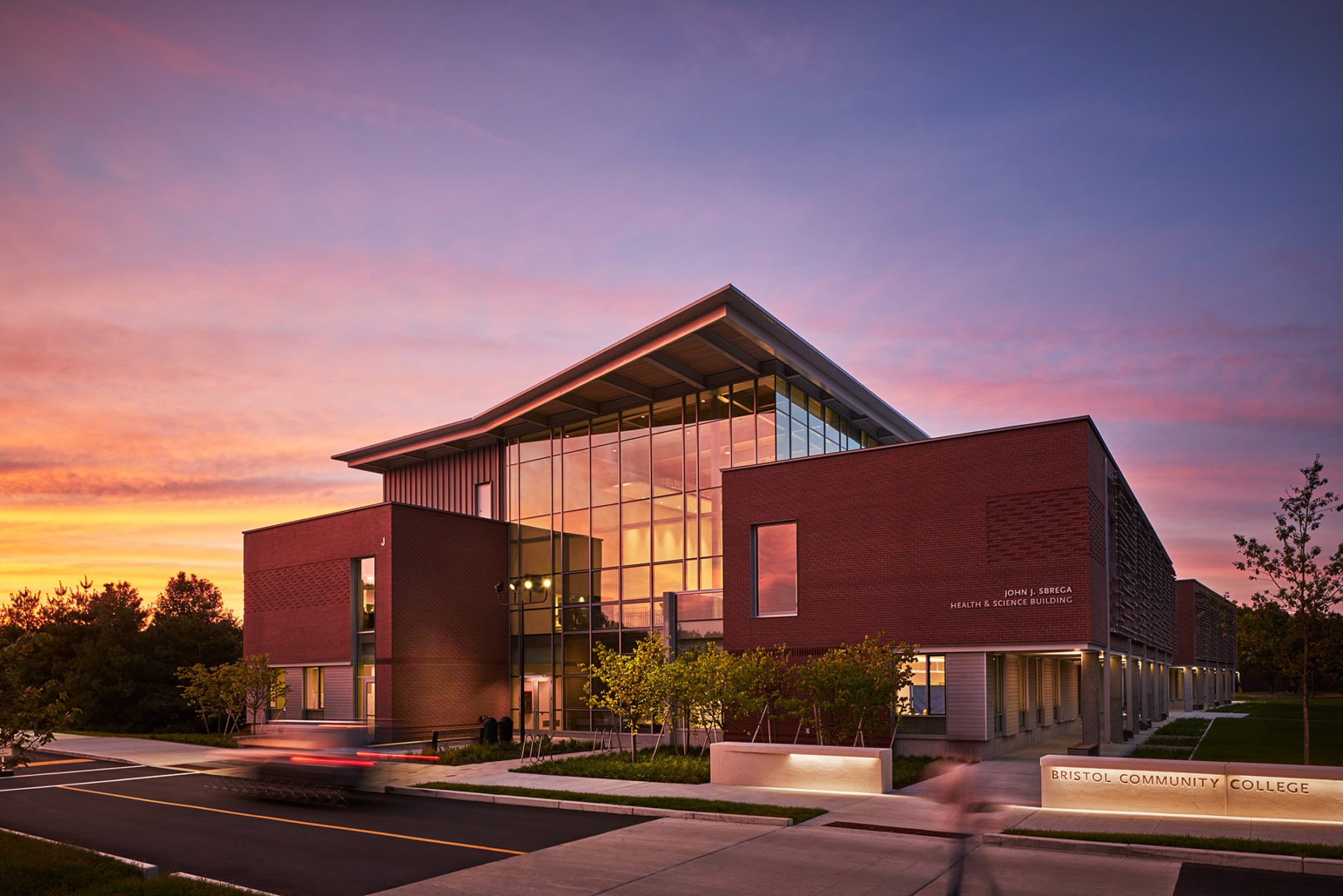
The 50,600-square-foot building is highlighted by an atrium that connects labs and serves as a “learning commons.” Achieving zero-net-energy in this building did not impact its $31.5 million construction budget
These spaces are organized around a common, light-filled learning commons and student living room, meant to invite a broader set of users to the building as a place to study and otherwise learn in more informal ways. The walls separating lab spaces from the atrium are glazed, with a combination of opaque markerboard glass and clear glass, allowing for views into the labs and putting science on display.

Teaching spaces are located around a shared atrium, or student living room, which addresses a shortage of student-oriented study and hangout space on campus, and also creates a continuous inside/outside pedestrian path from the edge to the center of campus
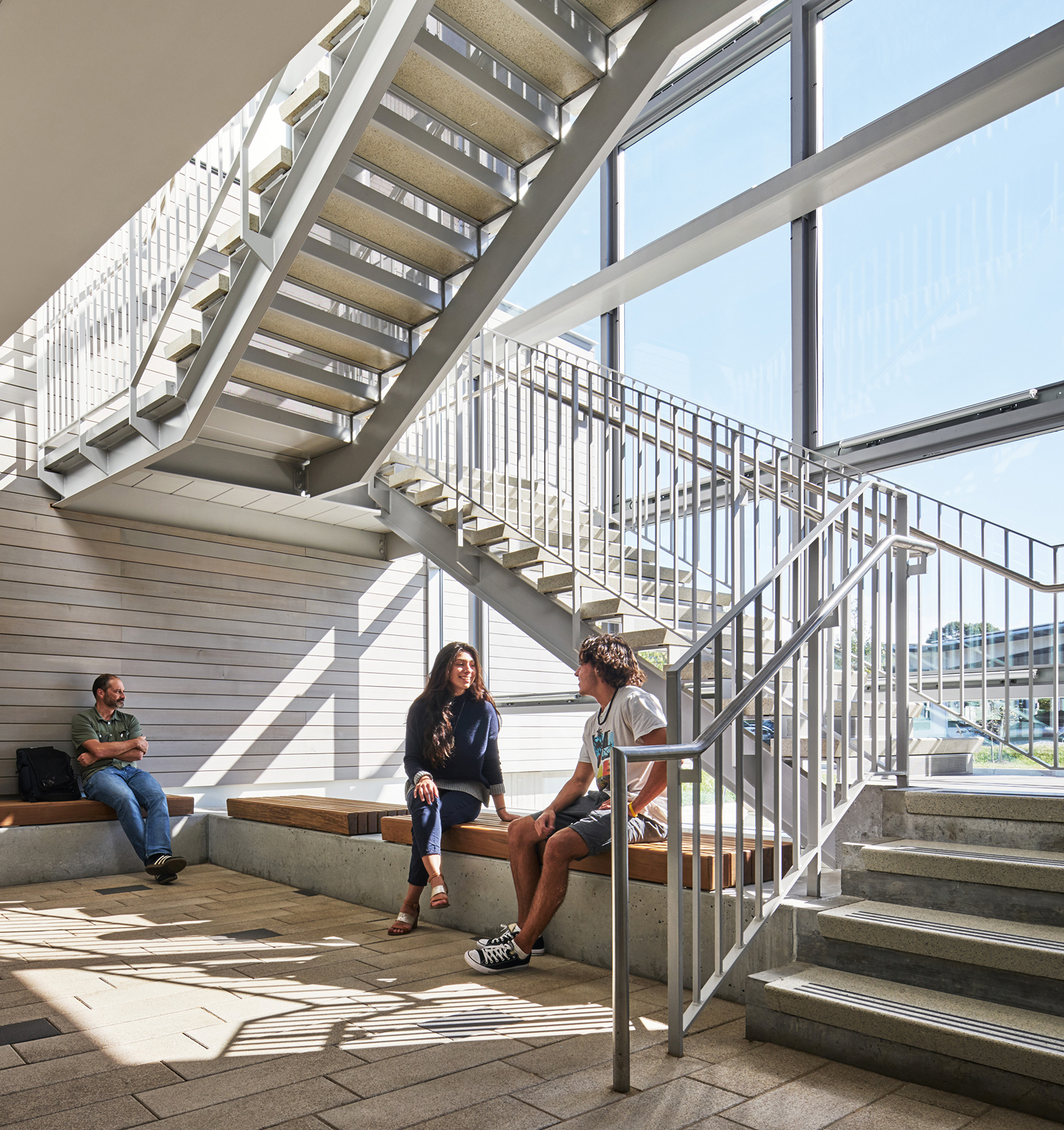
The open monumental stair is highlighted as the main means of circulation, decreasing the use of the elevator
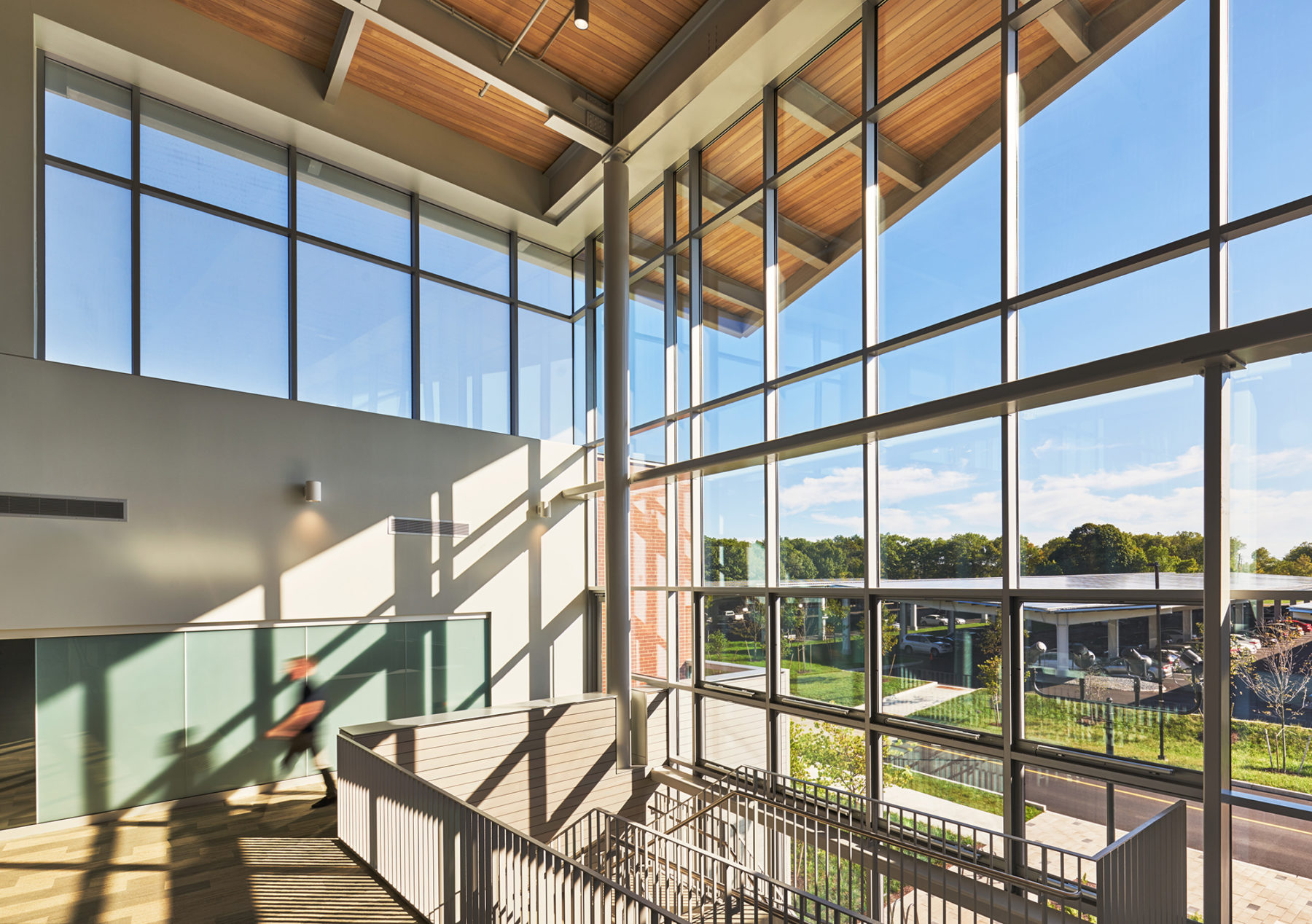
Glazing was optimized and the exterior envelope was designed to high performance standards while also allowing for natural ventilation for the building
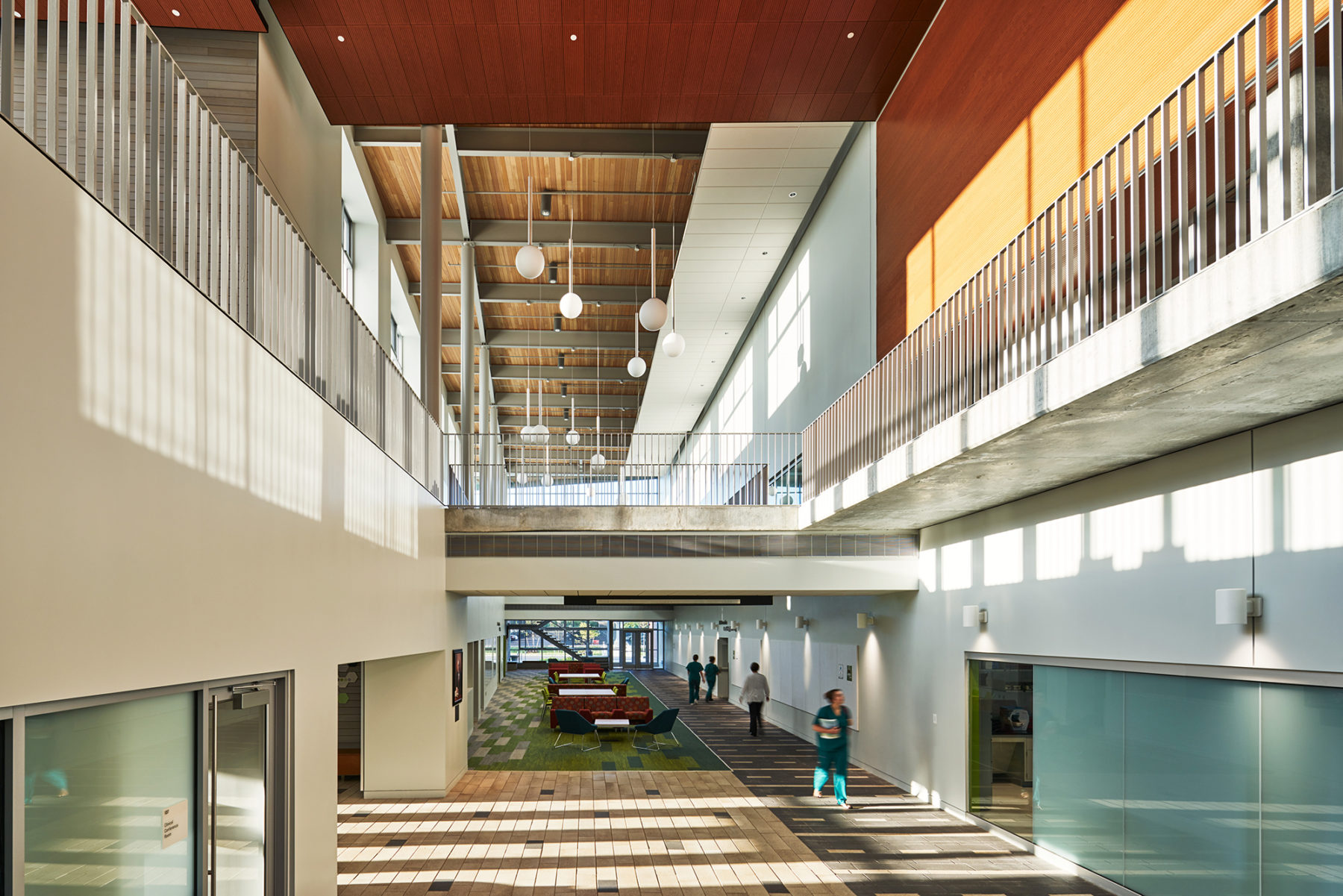
Instructional labs are located around the perimeter of the atrium. The interior walls are glazed allowing for daylight to penetrate the labs and for a visual connection to the classroom—putting “learning on display”.

In shoulder seasons given the right weather conditions, significant portions of the building can be naturally ventilated using a combination of automated and manual operations informed by the building management system. The materials and exposed structural systems are inspired by the old mill buildings of Fall River.
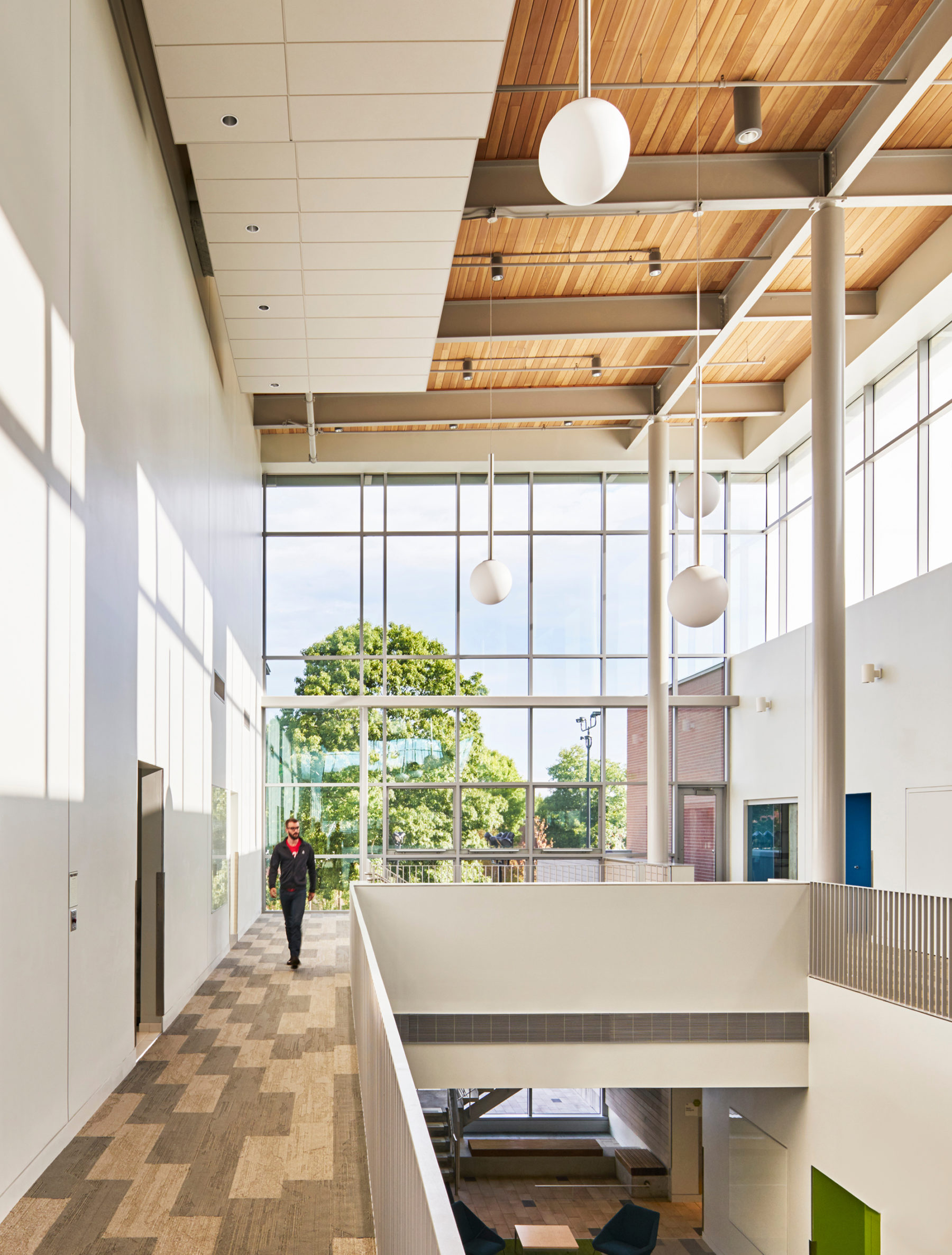
The two-story glazing on either end of the atrium provides a visual connection to the campus and also allows for ample daylighting
The open monumental stair is highlighted as the main means of circulation, decreasing the use of the elevator
Glazing was optimized and the exterior envelope was designed to high performance standards while also allowing for natural ventilation for the building
Instructional labs are located around the perimeter of the atrium. The interior walls are glazed allowing for daylight to penetrate the labs and for a visual connection to the classroom—putting “learning on display”.
In shoulder seasons given the right weather conditions, significant portions of the building can be naturally ventilated using a combination of automated and manual operations informed by the building management system. The materials and exposed structural systems are inspired by the old mill buildings of Fall River.
The two-story glazing on either end of the atrium provides a visual connection to the campus and also allows for ample daylighting
The 50,600-square-foot building serves traditionally energy-dense uses, including a large number of fume hoods, high plug loads, and specific ventilation and lighting requirements. An initial basis of design called for a high-performance building with numerous energy-conservation measures in order to meet the requirement that state-owned buildings be Massachusetts LEED Silver Plus, including a minimum of 20% energy cost-reduction relative to code.
While the project paused for funding in 2012, the College intensified its ACUPCC commitment to carbon neutrality by 2050, initiating plans to build a site-based 3.2 megawatt solar array. This new context presented an opportunity to reassess the original “high-performance” design, which, according to the energy model, would not keep pace with BCC’s 2050 commitment, using at least 50% of the power generated by the solar array and enough natural gas to heat two hundred homes. The team made a strategic investment to develop a Zero Net Energy (ZNE) design, which would balance annual energy consumption with renewable energy generated on site. With few comparable built examples, the question was: how to achieve ZNE for an energy-dense program in a cold climate?
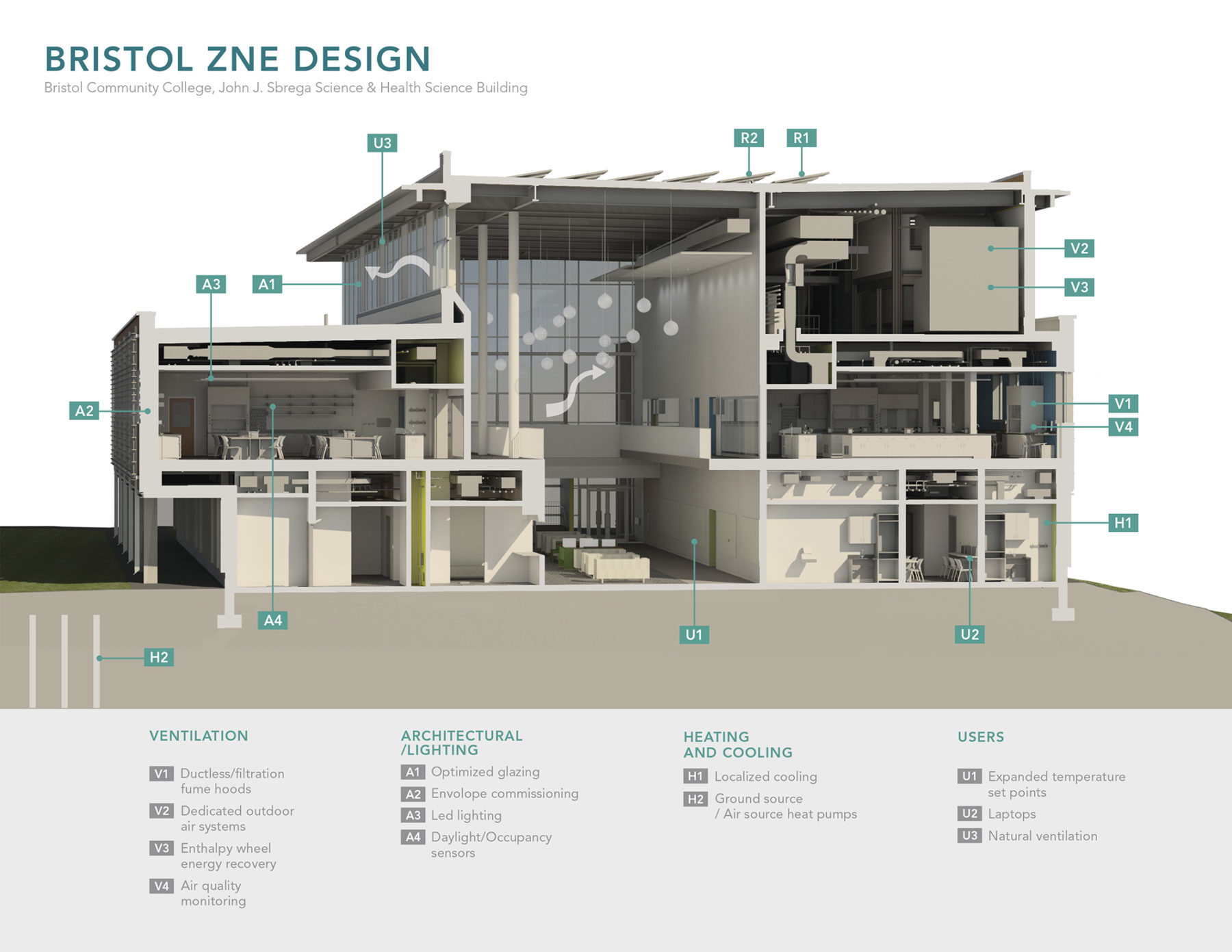
A combination of strategies including ventilation, architectural/lighting, heating and cooling all helped the building achieve its ZNE goal without increasing the budget
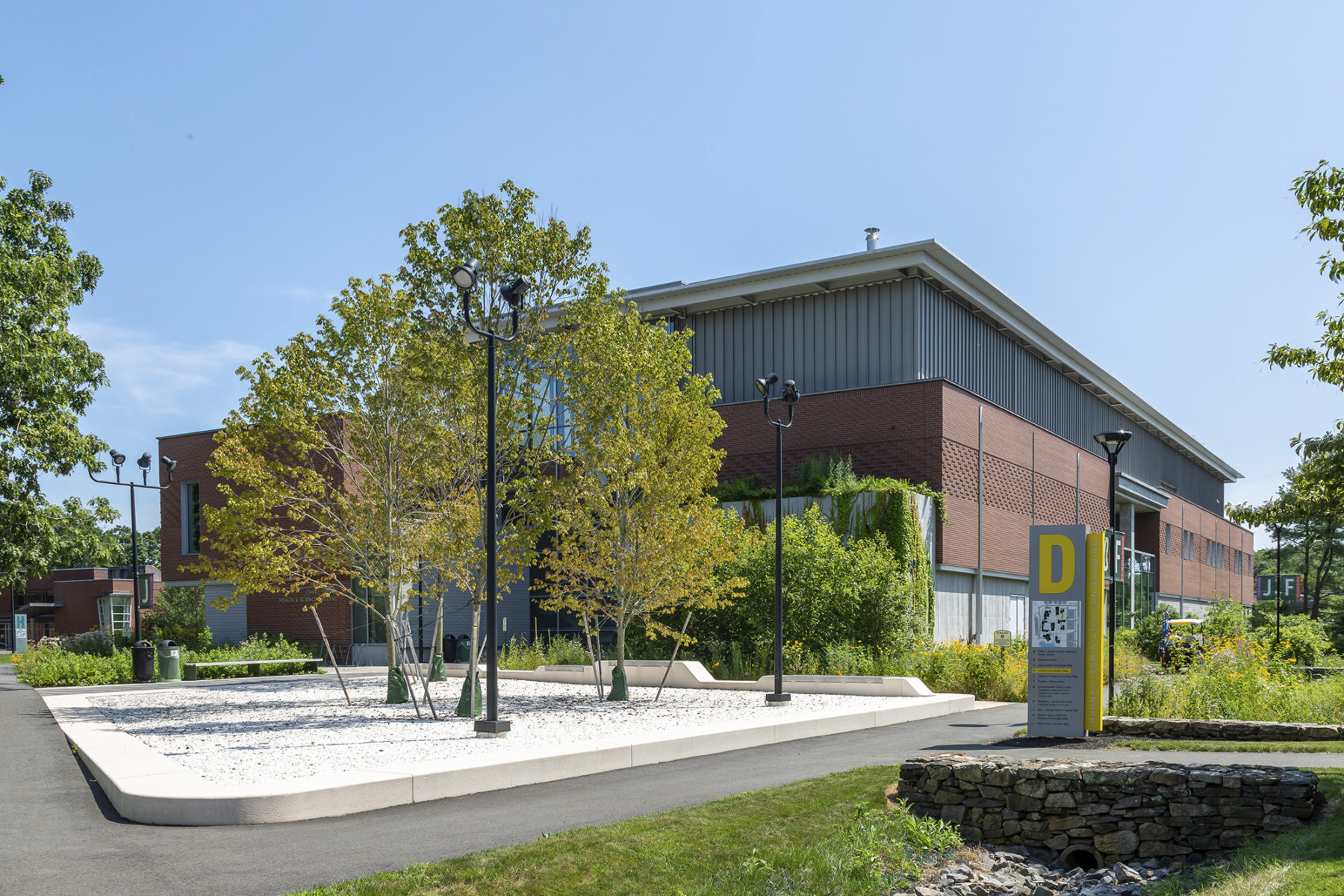
A ground-source heat pump system heats and cools the building by using the geothermal ground loop as a heat source in the winter and heat sink in the summer
A number of options were tested using simulations, calculations, research, and discussions with manufacturers of advanced building technologies. Ultimately, a holistic combination of technologies and strategies were developed, including dramatically reduced lighting and plug loads, a high-performance envelope, natural ventilation systems, wider indoor temperature range, localized cooling, filtration fume hoods, air quality sensing, reduced air changes, enthalpy wheel heat recovery, and a hybrid-source heat pump system. Enhanced monitoring and verification will help to ensure efficient ongoing operation. The resultant design is projected to use less than 20% of the new array and no fossil fuels for heating and cooling. Significantly, the ZNE design was achieved without increasing the budget, serving as an important benchmark for future campus development and a model for other institutions.
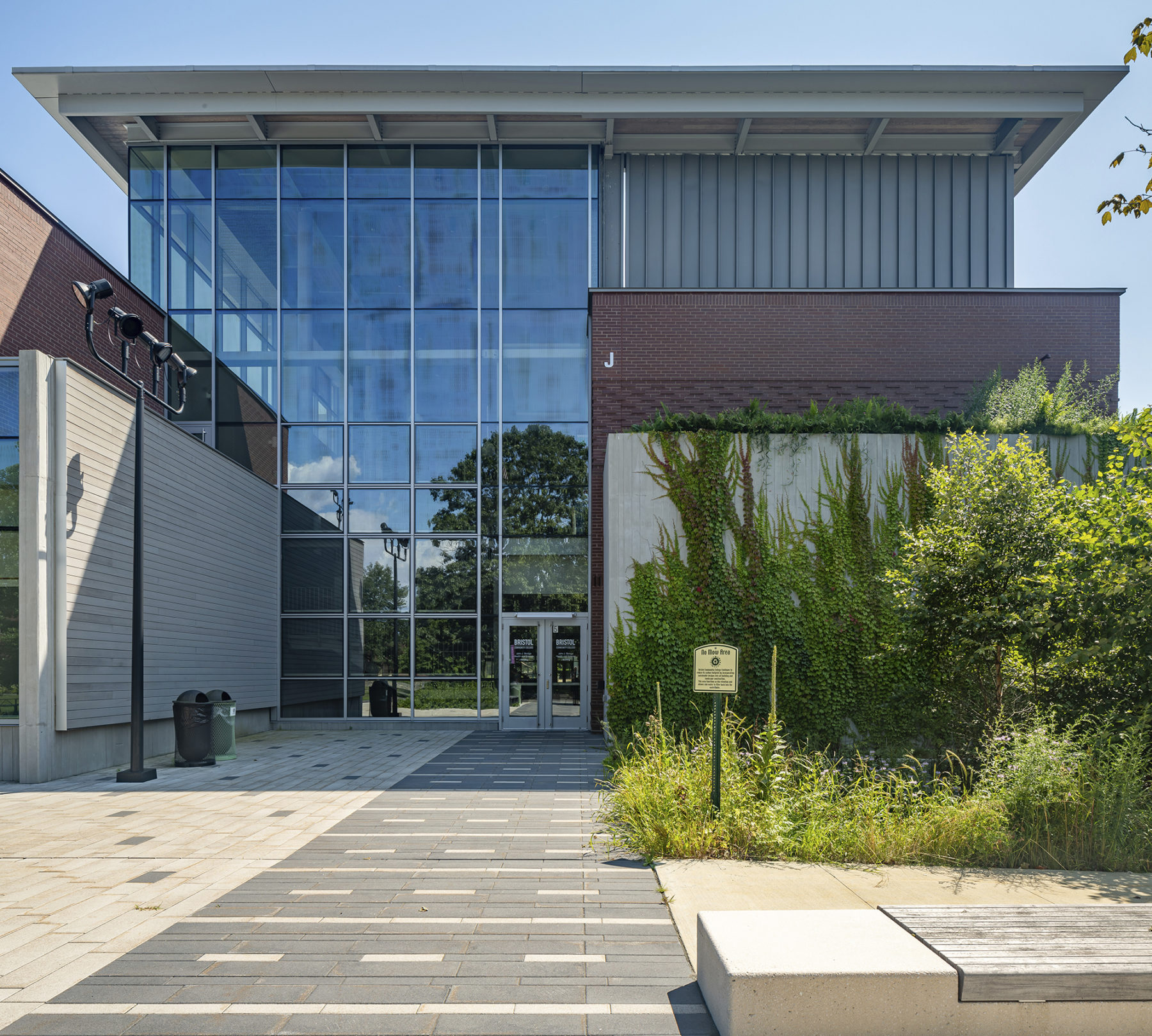
Sasaki worked in tandem with civil engineers to create a stormwater system that reduces the quantity of runoff directed to the municipal water sewer while increasing the quality of water through the use of planted basins that filter particulates

Stormwater management plan
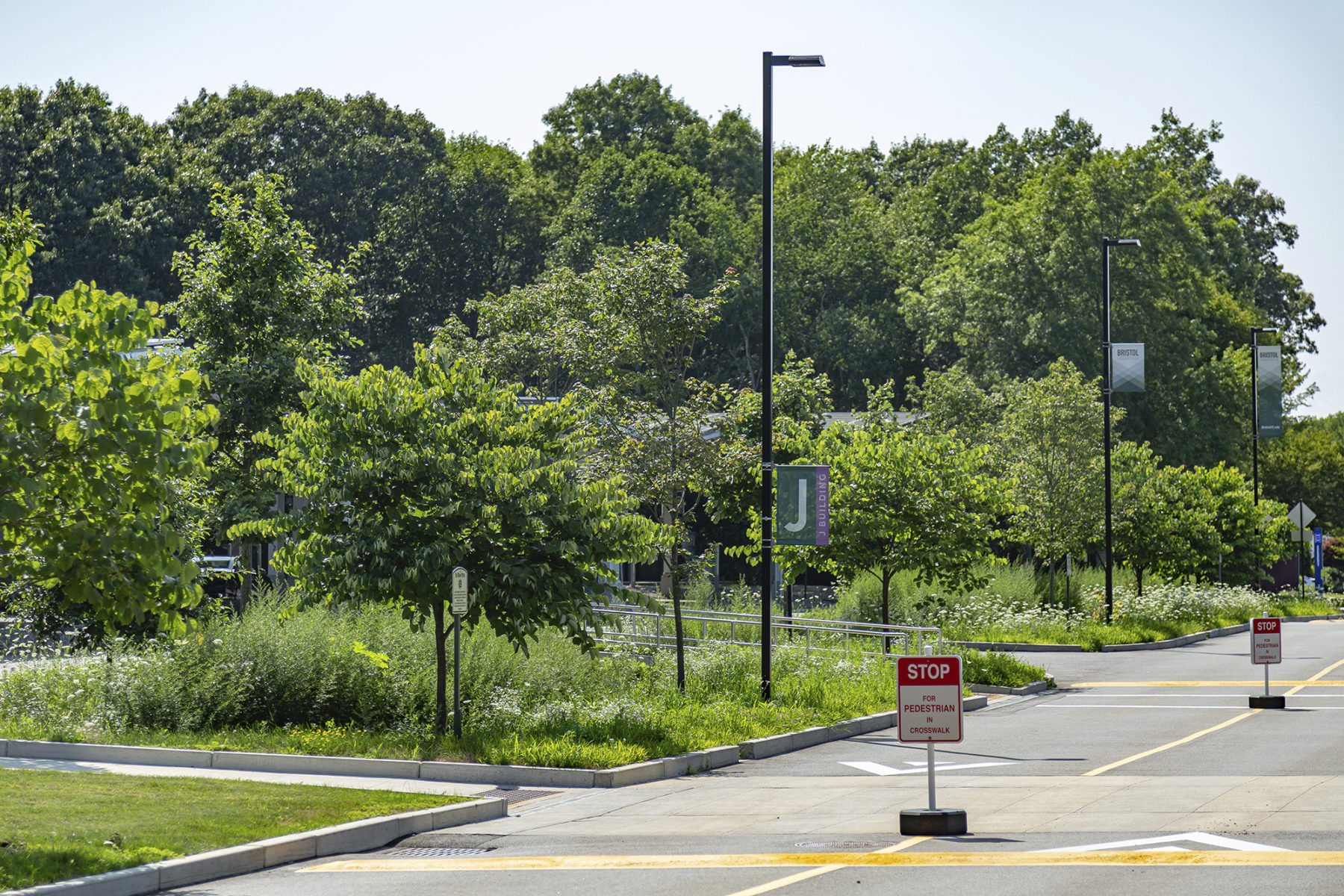
The stormwater design is fully integrated through a connected series of skillfully planted infiltration basins that offer new habitat spaces while hearkening back to the existing stormwater design of moats and drainage-ways seen throughout campus
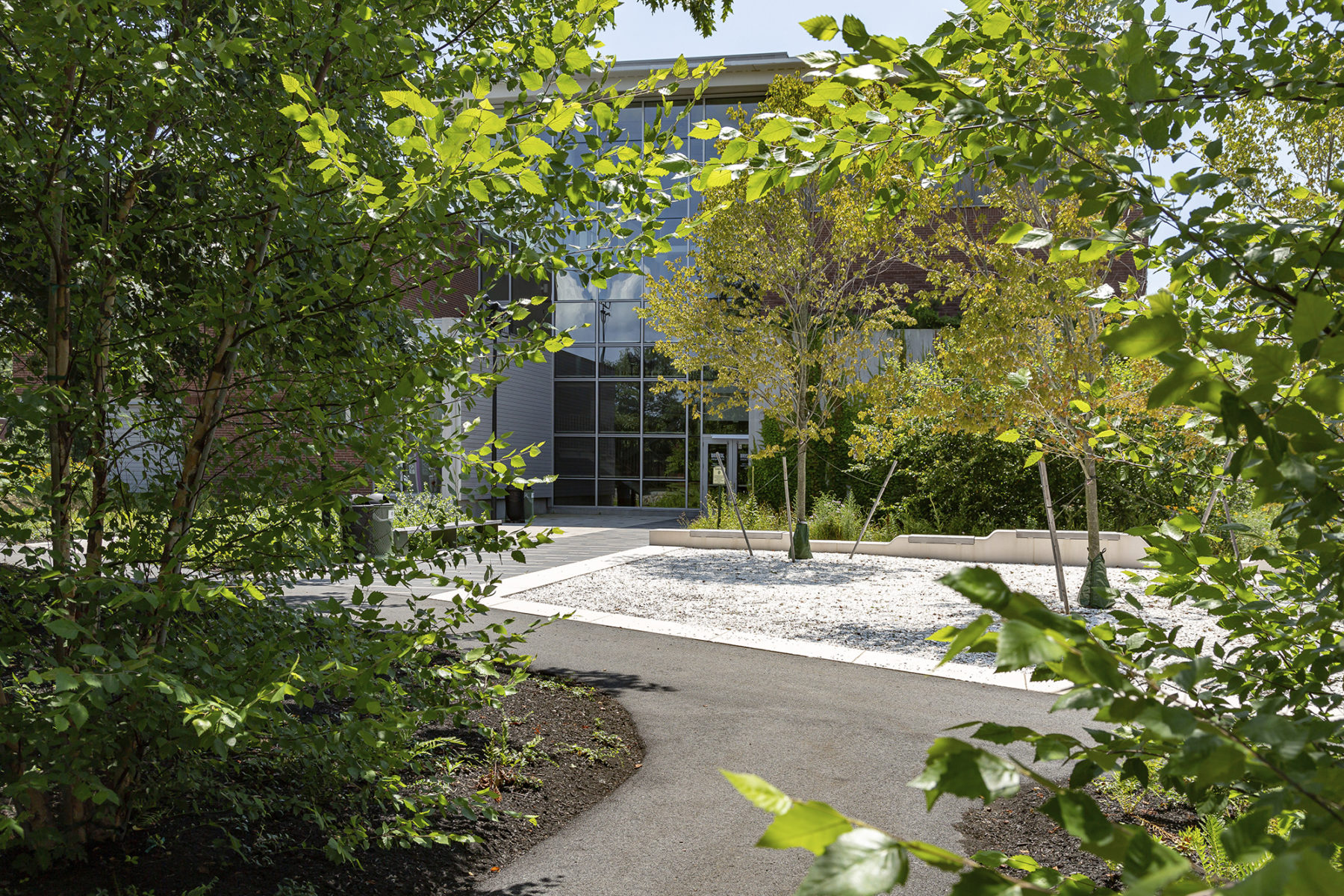
Pedestrians are guided along a new network of paths, gardens, and stopping points in the landscape
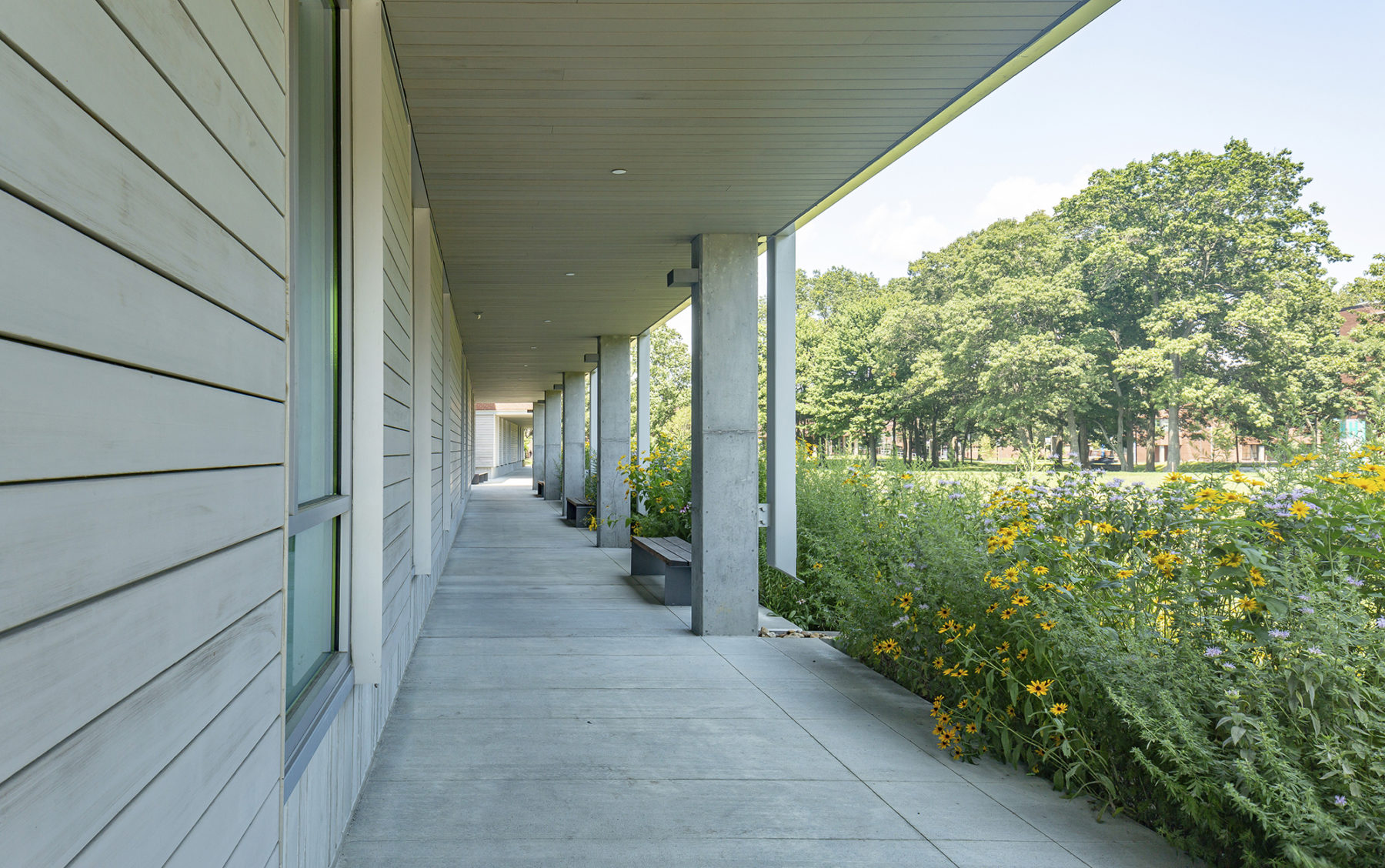
Bioretention areas are planted with perennials and are designed to sit adjacent to walkways and plazas so that students, employees, and visitors can interact with this efficient stormwater system
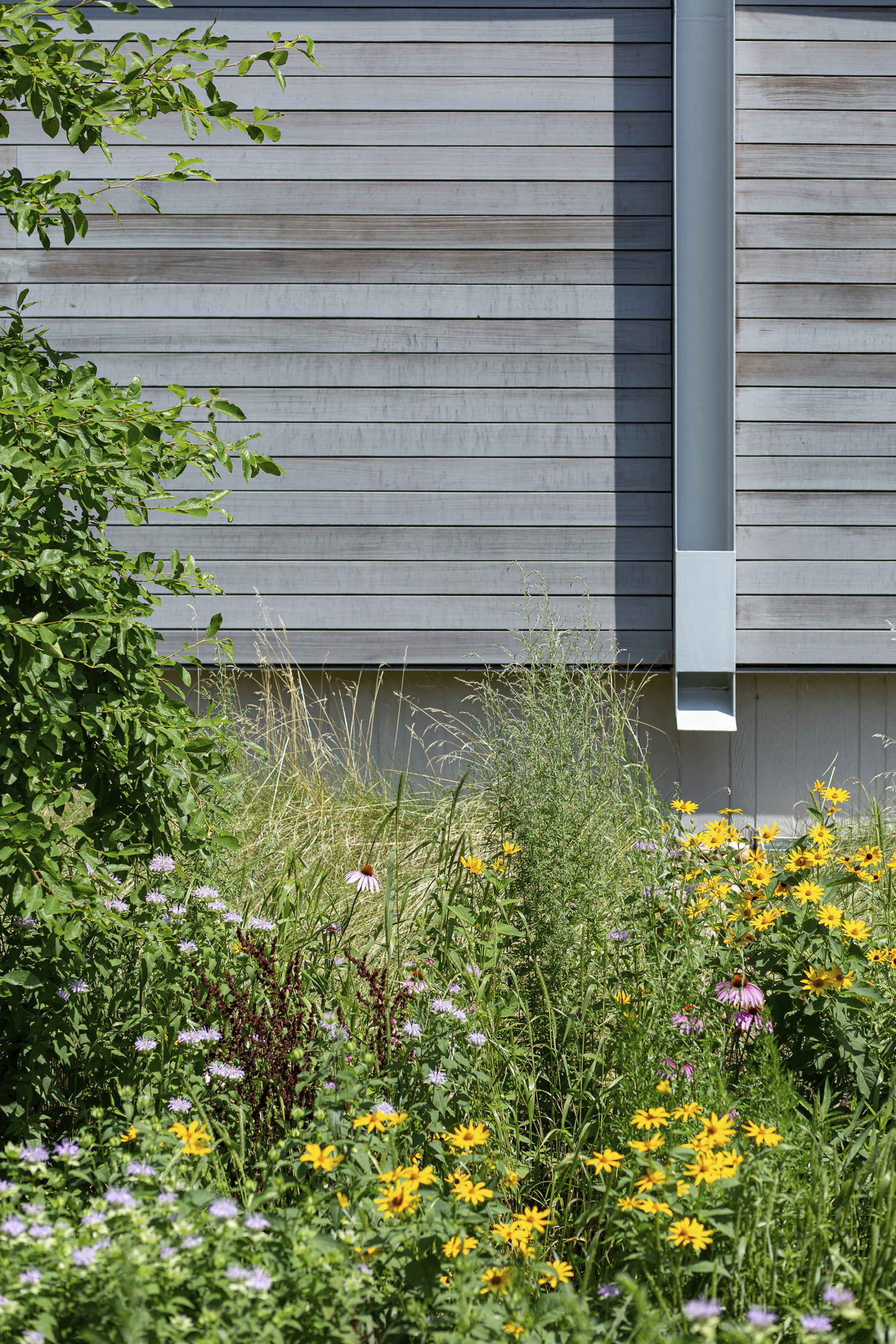
Rain garden

Roof water is directed to lush bioretention areas planted with native forbs, perennials, and trees
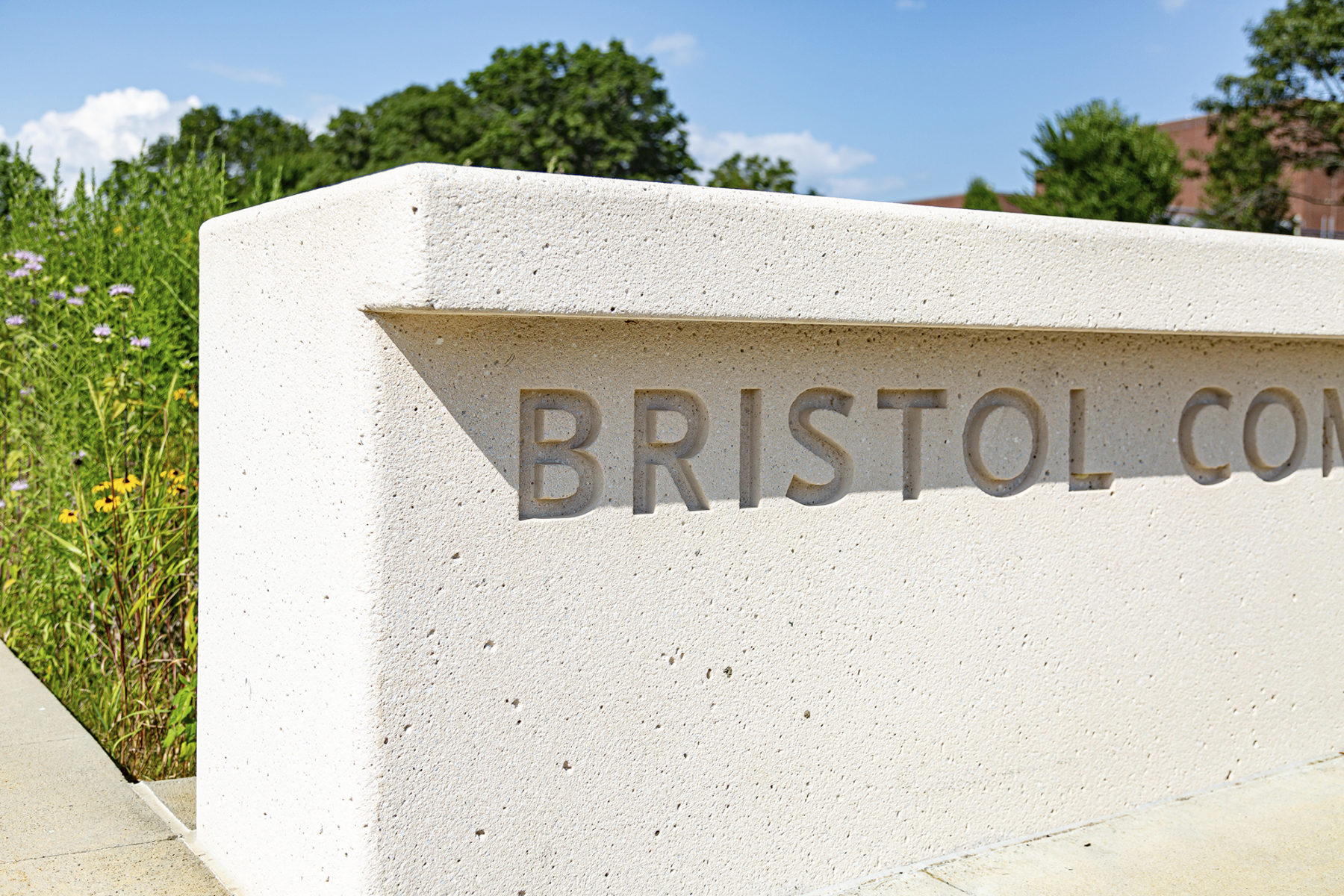
Bristol Community College John J. Sbrega Health and Science Building is the first zero net energy (ZNE) academic science building in the Northeast United States

Walkway with no-mow area
The stormwater design is fully integrated through a connected series of skillfully planted infiltration basins that offer new habitat spaces while hearkening back to the existing stormwater design of moats and drainage-ways seen throughout campus
Pedestrians are guided along a new network of paths, gardens, and stopping points in the landscape
Bioretention areas are planted with perennials and are designed to sit adjacent to walkways and plazas so that students, employees, and visitors can interact with this efficient stormwater system
Rain garden
Roof water is directed to lush bioretention areas planted with native forbs, perennials, and trees
Bristol Community College John J. Sbrega Health and Science Building is the first zero net energy (ZNE) academic science building in the Northeast United States
Walkway with no-mow area
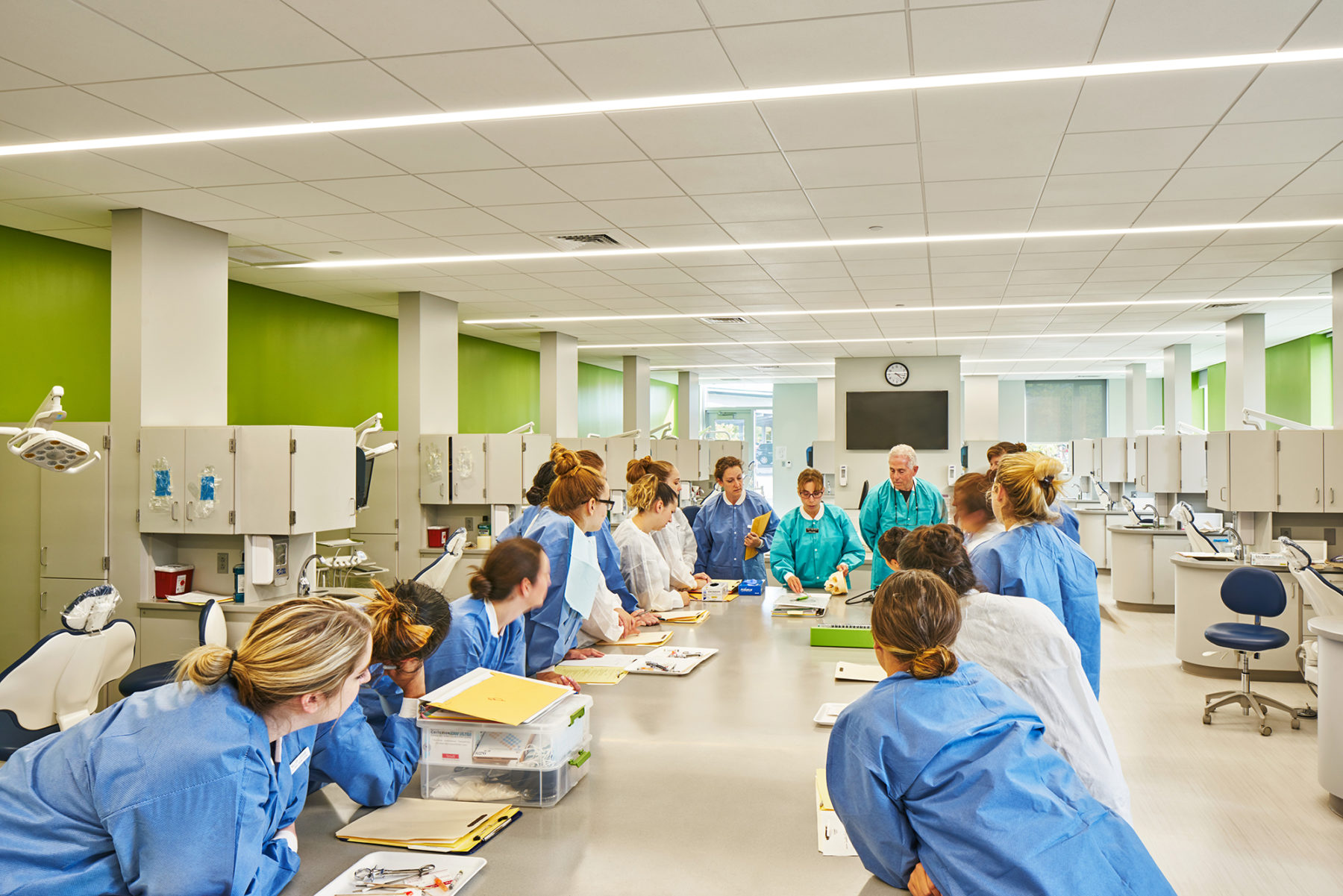
The project replaced outmoded labs with a hands-on learning environment and establishes a new sustainable model for lab buildings
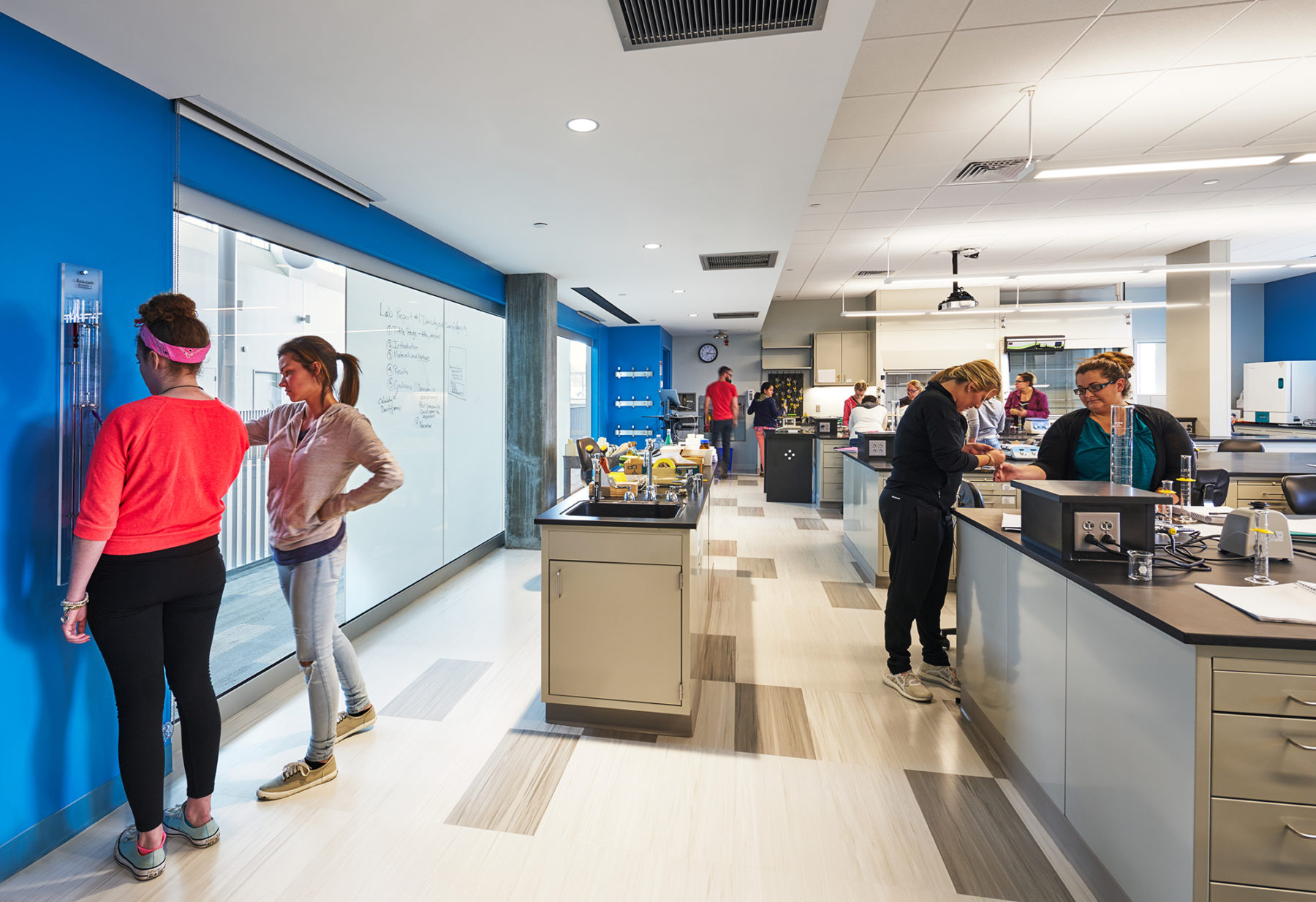
Glass walls separate labs from the atrium. The glass is partly opaque, and can be used as whiteboards, and partly clear, to allow views into the labs—putting science on display.
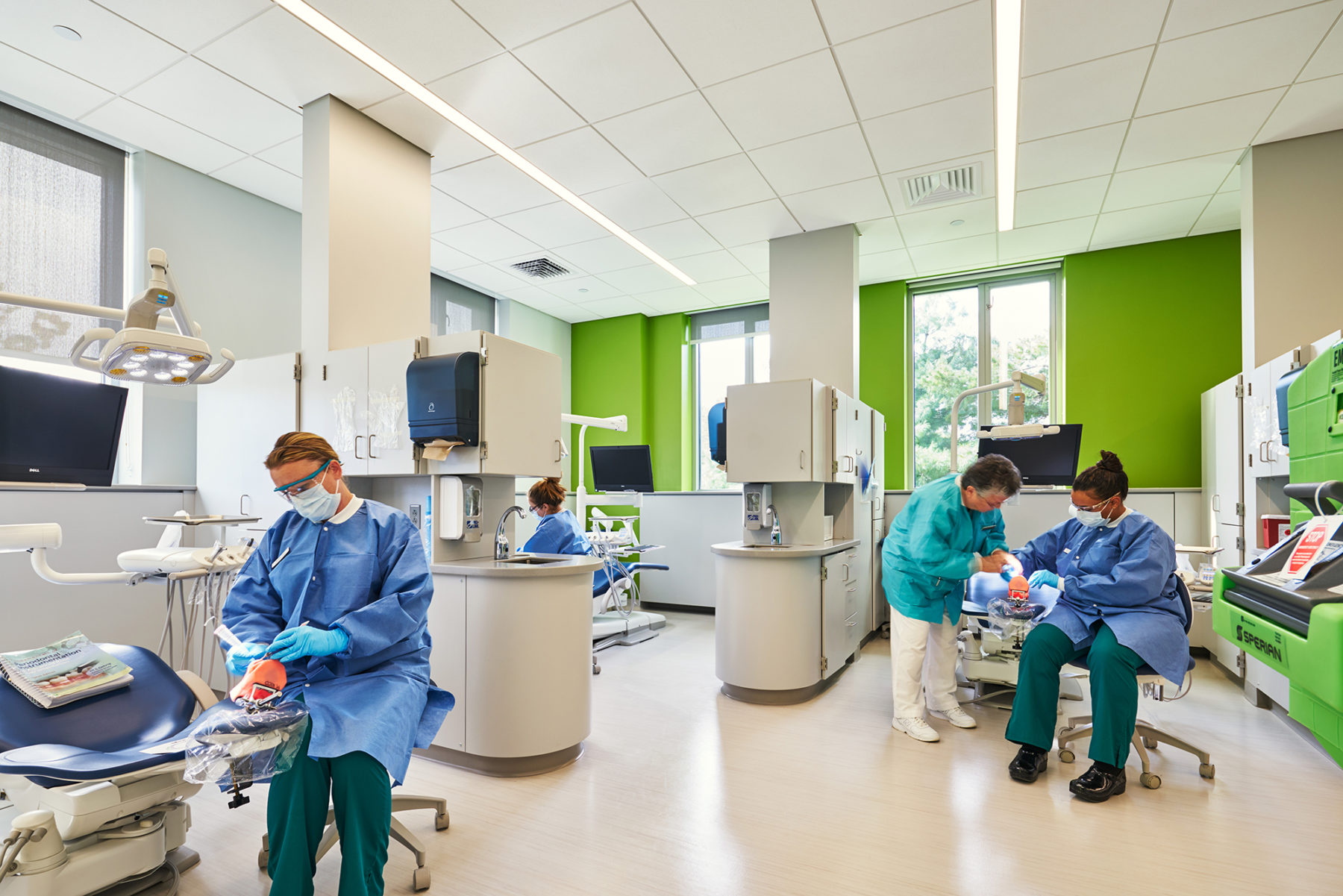
Hands-on training facilities serve the growing need for integration of experiential learning into health science education
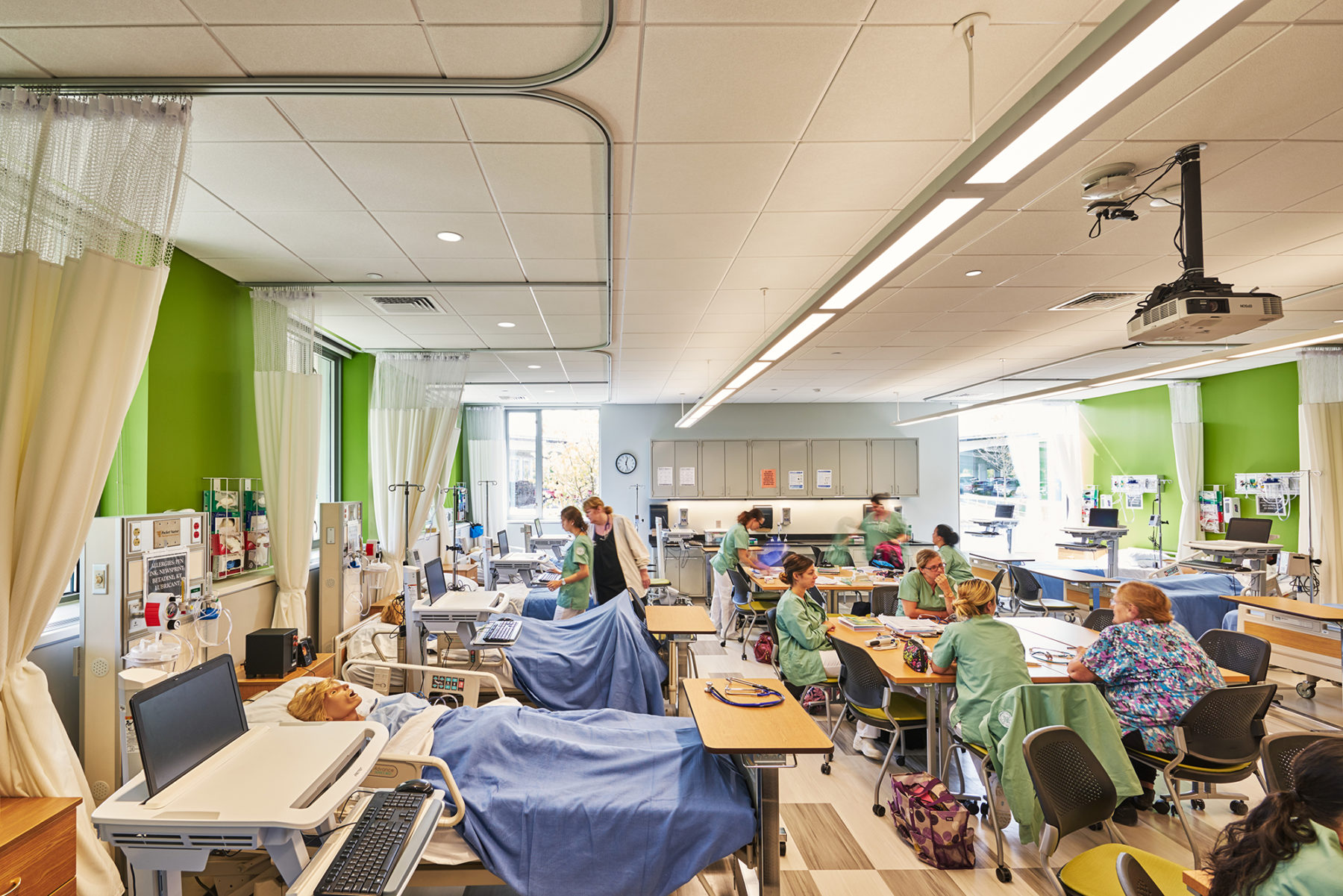
The Nursing Lab features 10 clinical beds with mannequins spanning the perimeter of the lab with flexible furniture in the center to support prep and debriefs before and after hands-on clinical sessions
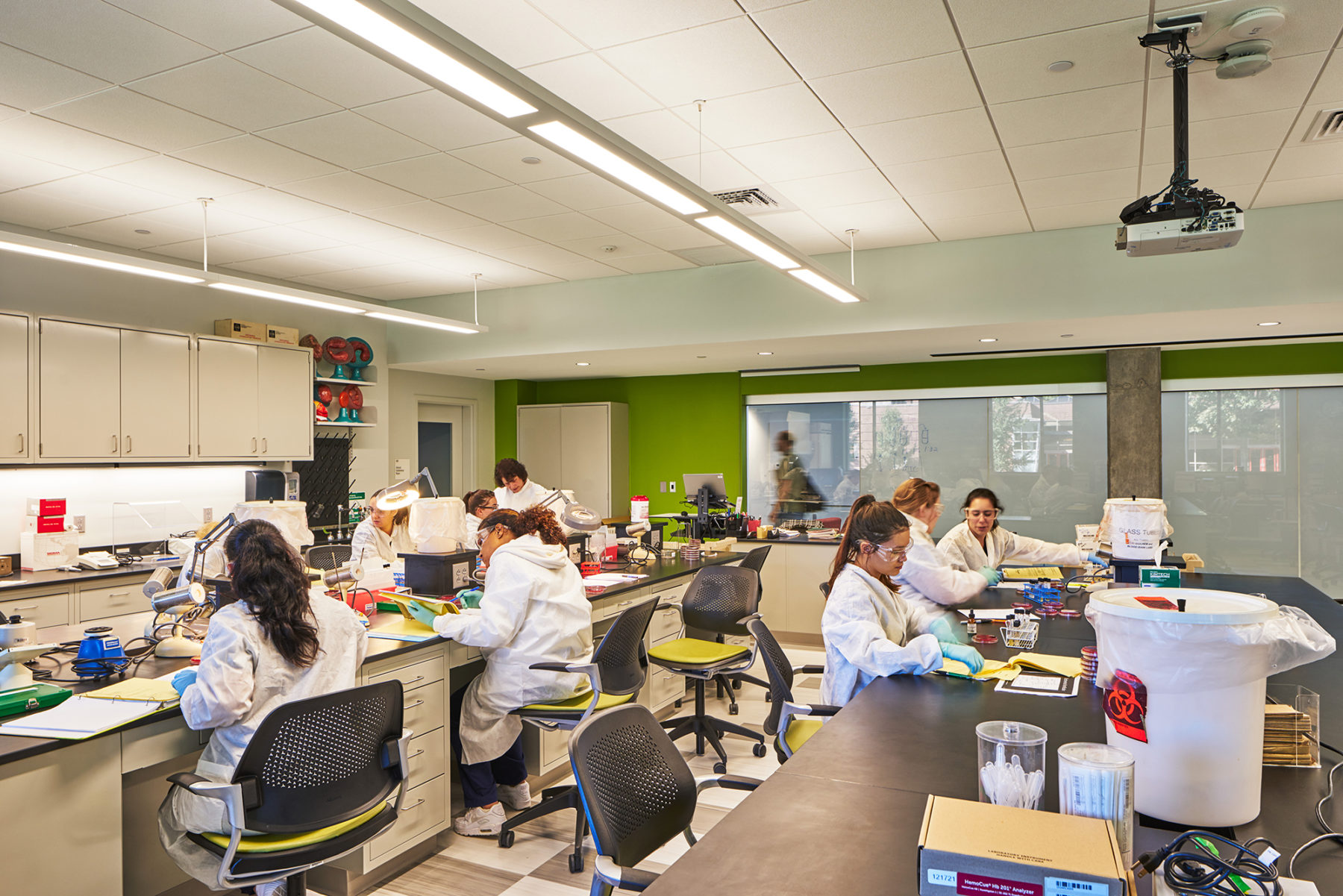
Clinical Laboratory Sciences is set up as a biology lab for handling of bodily fluids, pathogens, fungi, and molds, and also accommodating phlebotomy chairs so students can learn blood draw technique
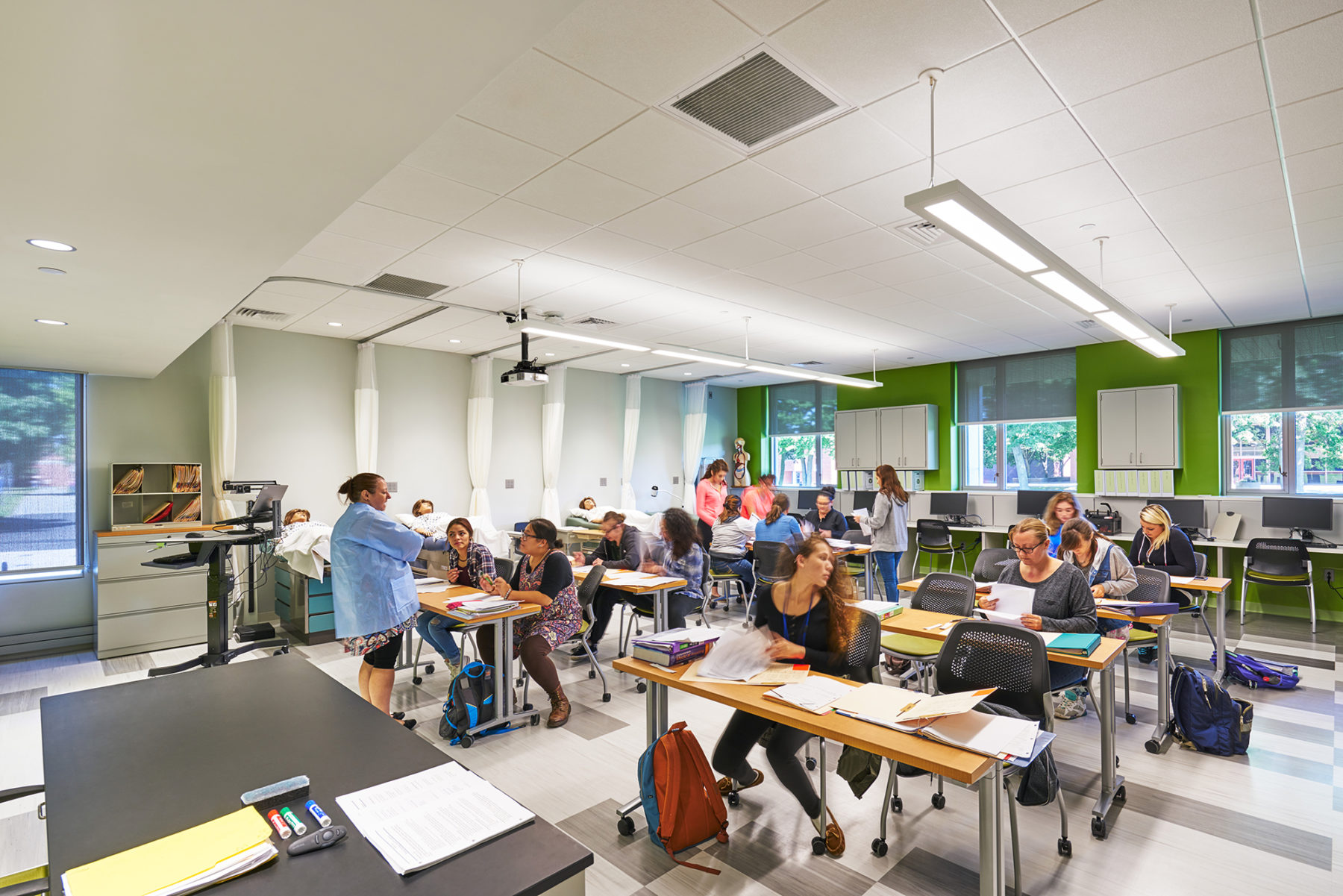
The southern wing of the first floor houses leading-edge educational spaces for Dental Hygiene as well as a Community Clinic. Outfitted with 16 dental hygiene operatories, the Dental Hygiene Operatory Lab supports contemporary hands-on Dental Hygiene education.
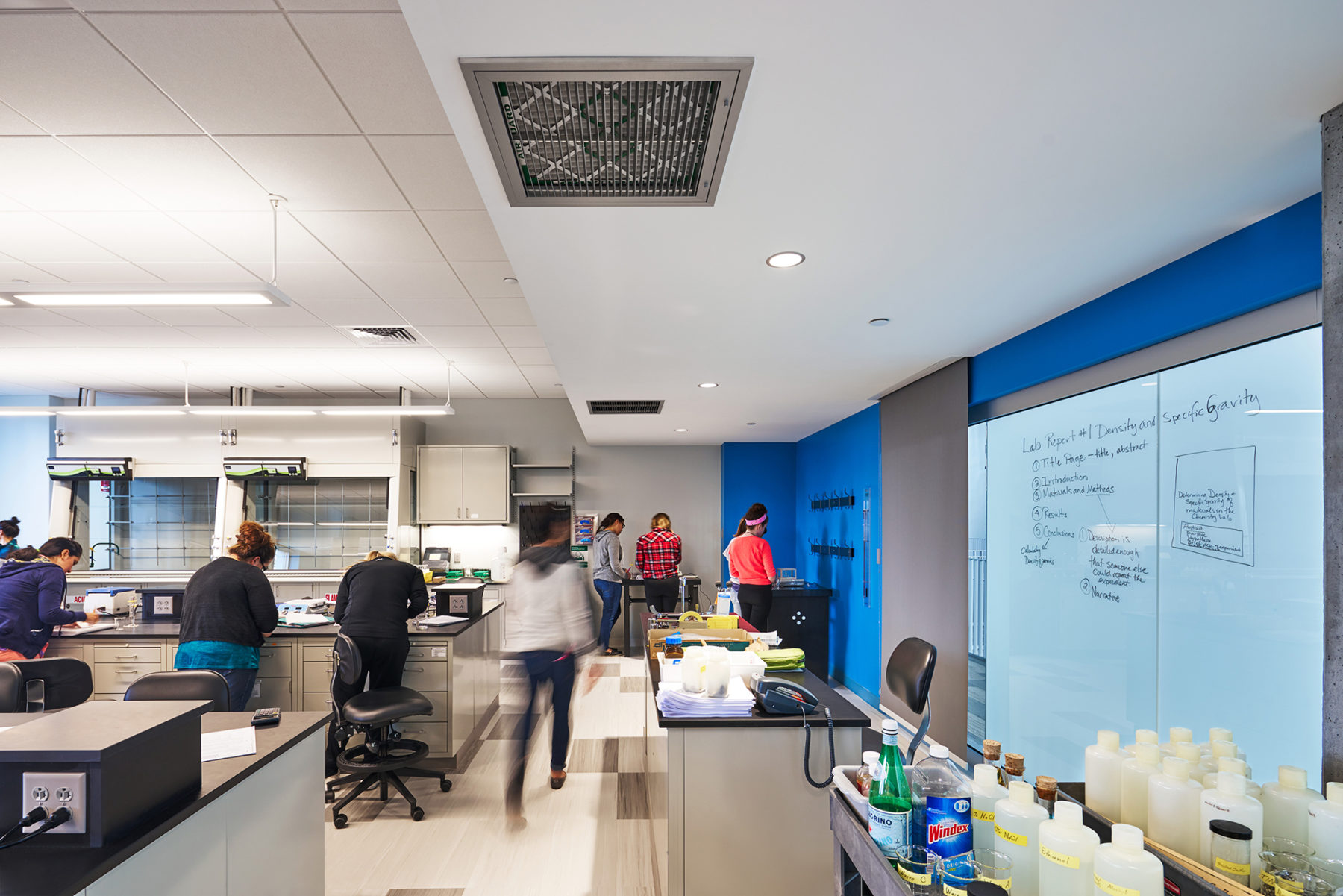
Light colored ceilings in the instructional labs reflect light throughout the space
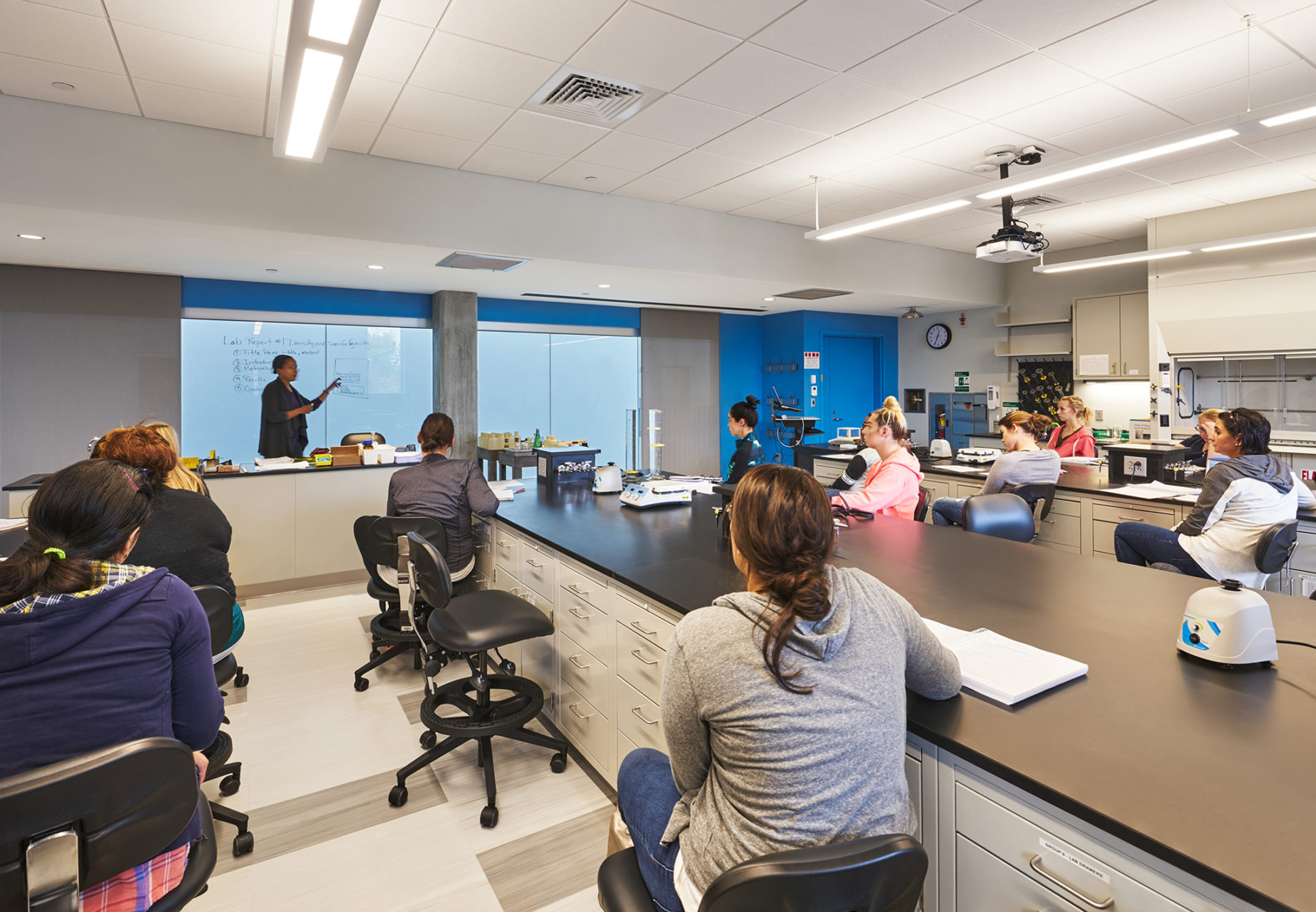
Every lab (other than the Dental Hygiene Teaching Clinic, which is subject to HIPAA regulations) is configured so that there are views from the atrium into the labs
Hands-on training facilities serve the growing need for integration of experiential learning into health science education
The Nursing Lab features 10 clinical beds with mannequins spanning the perimeter of the lab with flexible furniture in the center to support prep and debriefs before and after hands-on clinical sessions
Clinical Laboratory Sciences is set up as a biology lab for handling of bodily fluids, pathogens, fungi, and molds, and also accommodating phlebotomy chairs so students can learn blood draw technique
The southern wing of the first floor houses leading-edge educational spaces for Dental Hygiene as well as a Community Clinic. Outfitted with 16 dental hygiene operatories, the Dental Hygiene Operatory Lab supports contemporary hands-on Dental Hygiene education.
Light colored ceilings in the instructional labs reflect light throughout the space
Every lab (other than the Dental Hygiene Teaching Clinic, which is subject to HIPAA regulations) is configured so that there are views from the atrium into the labs

Through various design & utility interventions, the building was able to achieve Zero Net Energy without increasing the budget on the project—serving as an important benchmark for future campus development and a model for other institutions
For more information contact Fiske Crowell.

